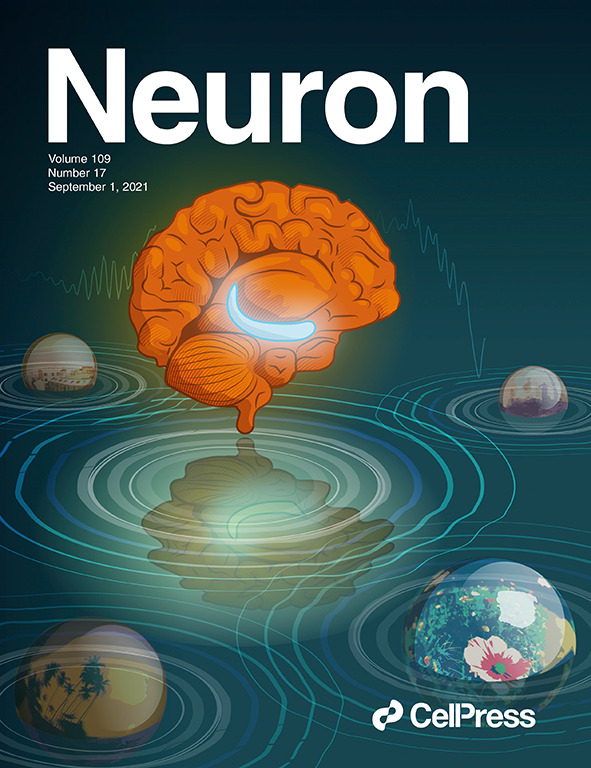Molecular and spatial analysis of ganglion cells on retinal flatmounts identifies perivascular neurons resilient to glaucoma
IF 15
1区 医学
Q1 NEUROSCIENCES
引用次数: 0
Abstract
Recent transcriptomic studies have categorized mouse retinal ganglion cells (RGCs) into 45 types; however, little is known about their spatial distributions on the two-dimensional retinal surface and how their local microenvironments impact their functions. Here, we optimized a workflow combining imaging-based spatial transcriptomics (multiplexed-error robust fluorescent视网膜平支架上神经节细胞的分子和空间分析鉴定了对青光眼有弹性的血管周围神经元
最近的转录组学研究将小鼠视网膜神经节细胞(RGCs)分为45种类型;然而,人们对它们在二维视网膜表面的空间分布以及它们的局部微环境如何影响它们的功能知之甚少。在这里,我们优化了基于成像的空间转录组学(多路误差鲁棒荧光原位杂交[MERFISH])和视网膜平载免疫染色相结合的工作流程。我们计算记录了所有rgc的体细胞分布,发现34/45的分子定义类型呈现非均匀分布。我们分析了每个细胞的局部邻域,确定了7种血管周围生态位富集的RGC类型,包括定向选择性RGC (DSGC)和内在光敏性RGC (ipRGC)类型。我们进一步检查了实验性青光眼模型,发现存活的RGCs在血管周围生态位中富集。血管周围DSGCs和M1 ipRGCs具有特别的弹性,这表明靠近血管提供了不依赖于mtor的细胞外源性神经保护。总之,我们的工作提供了RGC类型的综合空间图谱,并将其微环境与神经变性的不同易感性联系起来。
本文章由计算机程序翻译,如有差异,请以英文原文为准。
求助全文
约1分钟内获得全文
求助全文
来源期刊

Neuron
医学-神经科学
CiteScore
24.50
自引率
3.10%
发文量
382
审稿时长
1 months
期刊介绍:
Established as a highly influential journal in neuroscience, Neuron is widely relied upon in the field. The editors adopt interdisciplinary strategies, integrating biophysical, cellular, developmental, and molecular approaches alongside a systems approach to sensory, motor, and higher-order cognitive functions. Serving as a premier intellectual forum, Neuron holds a prominent position in the entire neuroscience community.
 求助内容:
求助内容: 应助结果提醒方式:
应助结果提醒方式:


